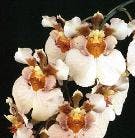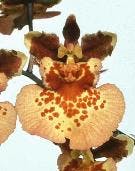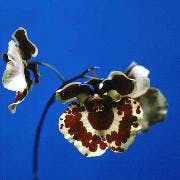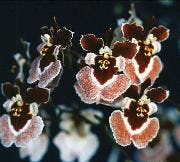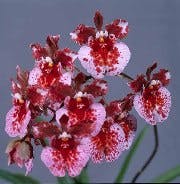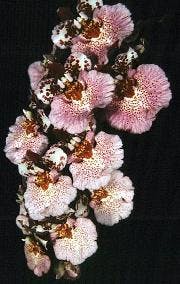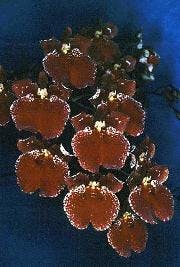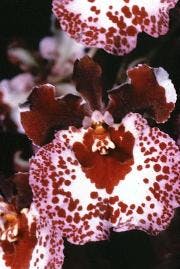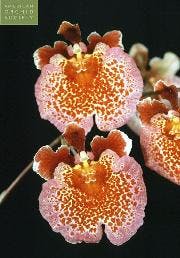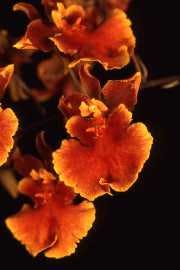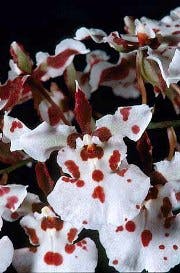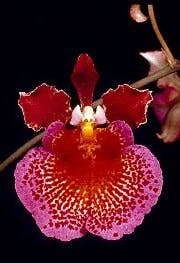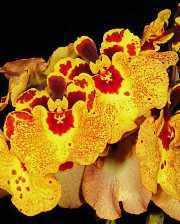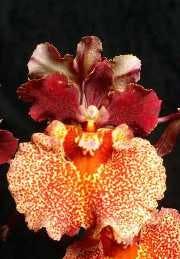ABOVE: Four clones of Tolumnia Golden Sunset that illustrate the dramatic variation in this grex.
Mention Tolumnia (Equitant Oncidium) hybrids and an immediate association is Tolumnia Golden Sunset, one of the most delightful Tolumnia hybrids produced over the past 60 years. The year 2000 marked the 25th anniversary of the registration of this grex, and these 25 years have given breeders and aficionados alike an excellent perspective from which to judge its success or failure. Has it emerged as a standard of excellence? Does it have recognized value in breeding? Is it an enduring example of quality?
History
In the early 1950s, the legendary W.W. Goodale Moir of Hawaii pioneered Tolumnia breeding when he began crossing the species he had collected on his business trips to the West Indies. The first 25 years of activity was dominated by his efforts. By the 1970s the potential he was coaxing out of "Moir's weeds," as they were called, encouraged others to join the pursuit. The most active of these were Richard and Stella Mizuta and Robert and Susan Perreira, also of Hawaii. The foundation Moir had painstakingly laid was about to bear fruit. Tolumnia Golden Sunset (Stanley Smith x Tiny Tim) was made by the Perreiras, and registered by Francis Aisaka in 1975. It is a fairly simple hybrid that combined four of the five species Moir believed to be the most significant in Tolumnia breeding: Tolu. pulchella contributed its genes for pink color, large size, full shape and good presentation on a long, often branching inflorescence. Tolu. triquetra supplied the potential for spots and assorted patterns, and a compact plant habit. It also offered shortening of the inflorescence as well as its propensity to branch. And Tolu.guianensis (formerly called Onc. desertorum, filled out the petal shape, enhancing overall roundness of the flowers. Tolu. urophylla offered its yellow color, good size and rather expanded lip.
It is of interest to note here that Moir considered this species one of the five cornerstone species in his breeding program, and no doubt it was, judging from his description of the clone he was most likely using: "A bigger variant ... we ... no longer possess ... though its 'blood' is surely to be found in the Golden Glow, a highly successful hybrid we produced." (Breeding Variegata Oncidiums, W.W. Goodale Moir and May Moir, 1980, page 27). His description of the clone and his reports of breeding results lead me to believe that he was dealing with a very select, perhaps polyploid, form. None of the average Tolu. urophylla I've seen or used in breeding have ever been that good or influential. To have had this clone in use by one of the most creative of hybridizers was fortuitous indeed.
The mix of these species seems to have been just about perfect, and their contributions are expressed in varying degrees across the many clones of Tolu. Golden Sunset, producing a remarkable variety of colors and patterns. This stunning variability has been Tolu. Golden Sunset's strongest asset.



